Plant This: Carex leavenworthii, or Texas sedge
If you’re lucky enough to have shade in central Texas, you may be unlucky in your attempts to grow traditional lawn grass. St. Augustine is the only dependable turf grass for shade, and during the drought, thirsty St. Augustine dried up and blew away all over Austin last summer. Not everyone wants to install a garden in place of lawn, which is why a sweet but tough native sedge is getting so much attention these days.
In dry shade, dappled shade or morning sun, Texas sedge (Carex leavenworthii) — formerly identified as Carex retroflexa ‘Scott’s Turf’ — makes a short, evergreen, tufty carpet that never needs mowing and requires little water once established. It can take light foot traffic (lay a stepping-stone path if you walk through it every day) and looks especially charming interplanted with bulbs, meadow-style. In my garden, I’ve planted a few swaths of Texas sedge along the edges of shady beds, intermingled with the strappier, evergreen foliage of pink rain lilies (Zephryanthes ‘Labuffarosea’).
In bloom, the candy-pink rain lilies rise on slender stems above the grassy sedge.
My friend Sheryl Williams, who blogs at Yard Fanatic, replaced her traditional lawn with Texas sedge a few years ago and loves its neighbor-pleasing grassy look and undemanding nature. Once she got it established she never watered it in the summer of 2010 and only a handful of times in the heat- and drought-challenged summer of 2011. (Click for a tour of Sheryl’s north Austin garden.)
You can find flats of Texas sedge under the name “lawn sedge” (formerly called ‘Scott’s Turf’) at Barton Springs Nursery, where they grow it from seed. If you need more convincing of the merits and beauty of this little sedge, visit The Grackle, where Lee loves Texas sedge too.
Note: My Plant This posts are written primarily for gardeners in central Texas. The plants I recommend are ones I’ve grown myself and have direct experience with. I wish I could provide more information about how these plants might perform in other parts of the country, but gardening knowledge is local. Consider checking your local online gardening forums to see if a particular plant might work in your region.
All material © 2006-2012 by Pam Penick for Digging. Unauthorized reproduction prohibited.


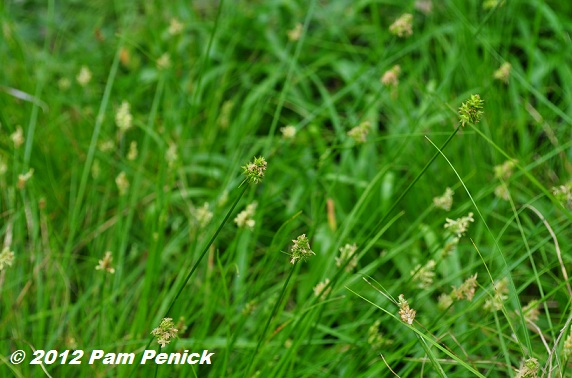
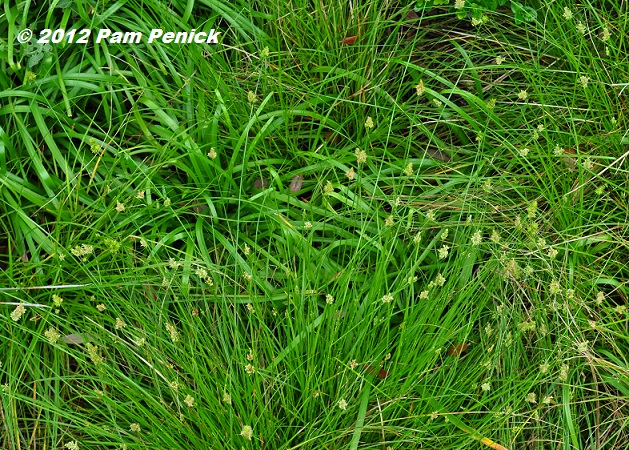
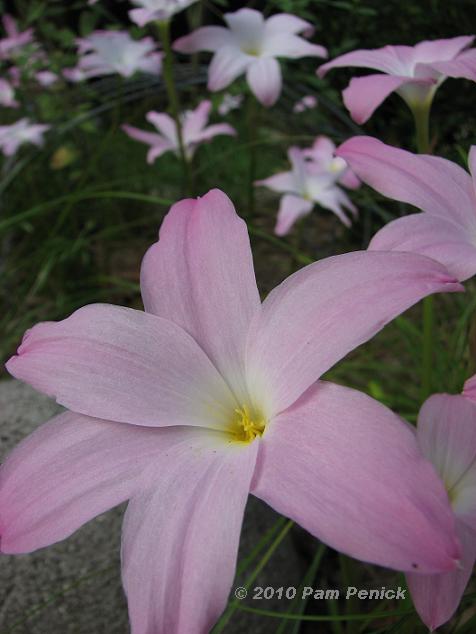
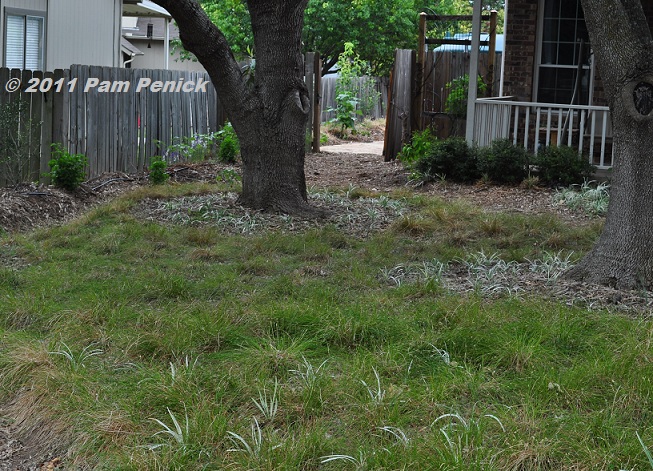
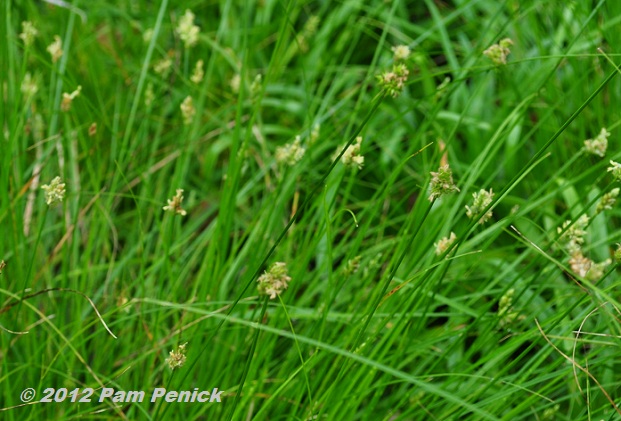
What a great grass! It must be so nice to have something that can withstand drought and doesn’t need to be babied and constantly watered. I am so not a lawn person, but it’s a good place for the kids to play. In the backyard I’m trying to encourage the ‘pretty weeds’ to grow and take over so I don’t have to baby the fescue, and in the front yard I am trying to rip out as much as I can get away with..
Indie, I agree that lawn grass does have its uses, especially as a play space for kids. Of course, for many people, the front lawn never gets played on, and that’s where a low-care lawn substitute can really pay off. Have fun with your own front-yard transformation! —Pam
Beautiful photo of the sedge under the trees. People often want to establish wildflower gardens, not realizing how much work it is to maintain them, but this sedge looks like it will be quite at home there.
You’re quite right, Phil, that a wildflower garden (or any kind of flowering garden) is more work than a mostly evergreen garden or groundcover. The sedge is definitely on the low-maintenance side. —Pam
Wow. That looks fabulous. We have St. Augustine in our yard here in Alabama but have been looking for an alternative because it just isn’t holding up and the weeds have TAKEN OVER!
St. Augustine can have trouble outcompeting weeds when it’s stressed, especially by too much sun or by drought. If you have dry shade, Texas sedge might be a good option to look into. —Pam
Very nice idea, Ms Turf [Alt]! Probably way longer-lasting and less $ than faux-turf, and it benefits so much more. The soft look of the sedge and rain lilies / bulbs is quite impressive…I can almost see a sole Nolina at a tree trunk base.
Hi, David. I think almost everything is less expensive than faux turf! And of course this is a much “greener” option as well. Plus it’s so easy to add bulbs in a sedge lawn for seasonal color. The first place I saw this look was in Scott and Lauren Springer Ogden’s Austin garden. It was very convincing! —Pam
SO MUCH BETTER than regular lawn…not only more durable, but WAY more interesting!
It is definitely more interesting! Its durability depends on how it’s used. Texas sedge is less durable than traditional lawn grass for use as a play space for kids and dogs, for example. But for a yard that sees little foot traffic, it’s very durable and requires far less work than a traditional lawn. It all comes down to “right plant, right place,” doesn’t it? —Pam
Will have to pass along this idea to my landlord… can it take sun as well as shade? Half of our front yard is full sun and half is dappled shade which makes for some interesting grass patterns… maybe we could do Thunderturf in the sunny part, what have you heard about that?
It can take sun, Juliet, but in such cases it tends to go dormant (brown) when it’s hot and dry—i.e., all summer. In Austin I think it does better with midday and afternoon shade, so it can remain green all summer with little attention. I don’t know much about Thunder Turf beyond what I’ve read online. As you say, it wants full sun. Look into the new Habiturf too, another native-grass turf mix for sun and light shade. Another option is to use a mass planting of Texas nolina in the shade. —Pam
Pam! Thanks for the mention! Have you driven by lately? It’s going nuts. Each clump is covered with those cool little flowers and it looks like a fireworks show! Seriously, this is one of the best things I have ever done.
That’s wonderful to hear, Sheryl. I’ll have to drive by and take a peek the next time I’m in the neighborhood. —Pam